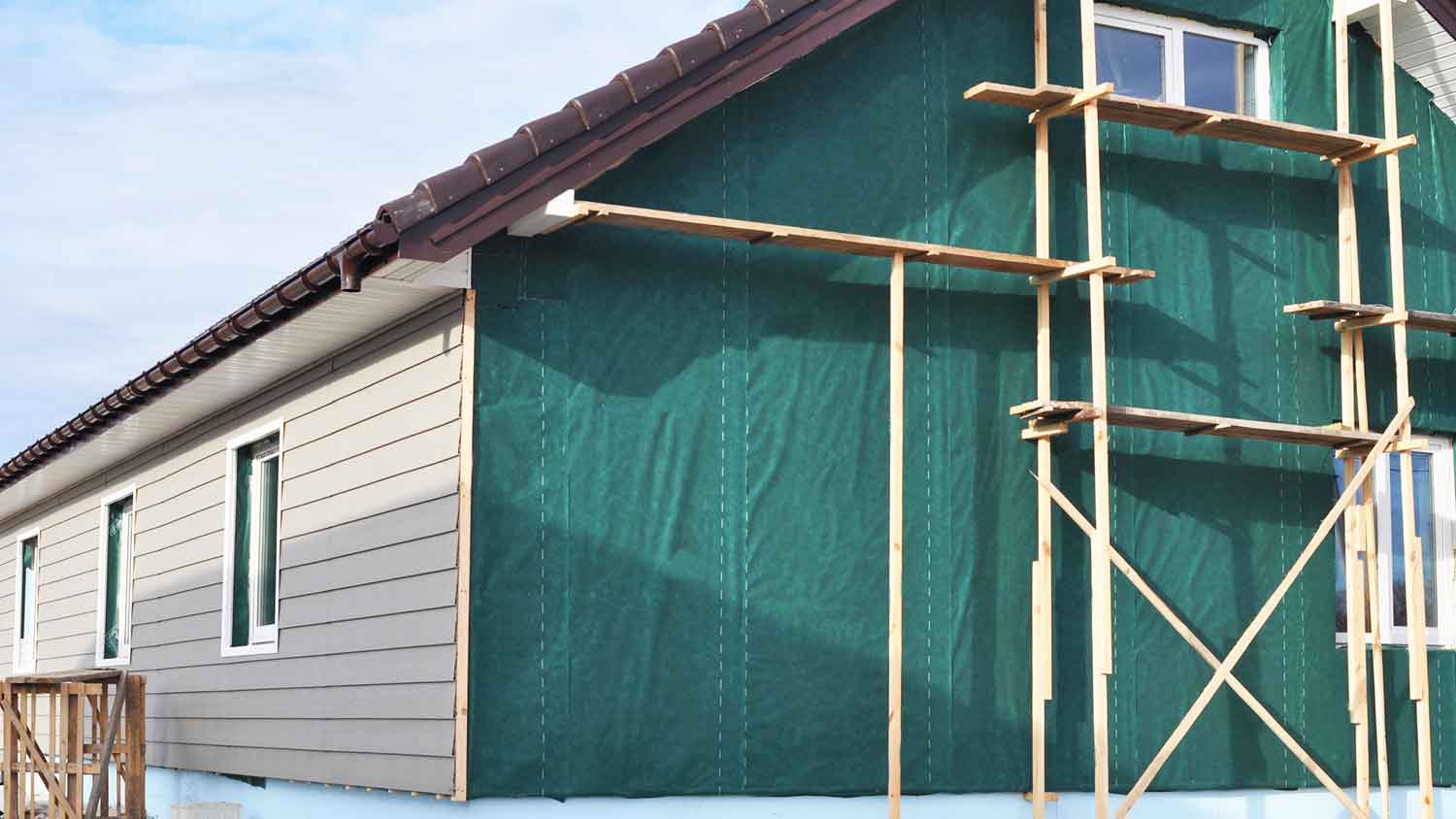
The type of material used and the size of the project will determine metal siding cost. Use this guide to explore all of the factors that affect the cost.
Time is not on your side when it comes to a house without siding


House wrap may be left exposed to the elements without siding for 30 to 180 days, depending on the type of house wrap and weather conditions.
Exposure to UV rays, rain, and dirt can cause house wrap to deteriorate and compromise its moisture protection.
Choose a house wrap with high UV resistance if you anticipate leaving your house without siding for an extended period of time.
While it would be nice if all house construction and improvement projects stayed on schedule, delays can lead to scenarios like a house sitting without siding for longer than intended. After 30 to 180 days of exposure to the elements, UV rays will compromise the house wrap and reduce its moisture protection. We break down reasons a house may sit without siding, factors that affect how long you can leave a house without siding, and the risks of delaying siding installation.
Construction delays are, unfortunately, a common occurrence that can throw off your intended schedule. Leaving a house with house wrap but without siding isn’t an ideal situation, but it’s an unavoidable one from time to time. Reasons a house may sit without siding include:
Delays waiting for materials or trying to locate discontinued siding
Waiting on a permit to install siding to be approved
Supply chain delays
Labor shortages
Bad weather

While you can’t always choose the best time of year to install siding to schedule your siding installation or replacement, the weather your home is exposed to before the siding is installed can significantly affect how long you can wait. Your house will be exposed to UV rays no matter the weather, but hot, sunny days may cause the house wrap to degrade faster. Extreme cold, wind, rain, or snow can also add to the urgency of installing siding as quickly as possible.
House wrap is a water-resistant barrier made of synthetic materials that protects your house from moisture intrusion and is installed over the exterior of the house and underneath the siding. Different brands and types of house wrap can be exposed to the elements for different amounts of time—the manufacturer will have a guide to how long the wrap can offer UV protection.
Adding the cost of a house wrap with higher UV protection into your cost to replace siding or installing new siding can offer more peace of mind in the case of unexpected delays.
The longer a house sits without siding and is exposed to UV rays, the more compromised the house wrap will become. Risks of compromised house wrap include:
Reduced moisture protection
Higher chance of mold growth and rot
Energy loss
Compromised structural integrity
To avoid damage to your home’s exterior and an increased risk of mold and rot, hire a siding contractor who can complete the project in a timely manner without leaving your home exposed to the elements. A local siding pro can work with you or your general contractor to minimize delays and ensure your home stays protected. Finding a pro who installs siding in your area will help you determine the best time to install siding and to time the project right to reduce the risk of extended exposure.
From average costs to expert advice, get all the answers you need to get your job done.

The type of material used and the size of the project will determine metal siding cost. Use this guide to explore all of the factors that affect the cost.

The cost of Hardie board siding depends on the size of your home and the style and color you choose. Get a more accurate estimate with our in-depth cost guide.

How much does liquid siding cost? Our liquid vinyl siding price guide breaks down material and labor costs—and points to potential savings.

Are you looking at stucco versus vinyl siding? Use our guide to compare their pros, cons, and costs so you can make the best choice for your home.

In this guide, we break down the strengths and weaknesses of the two most popular materials for home exteriors to help you choose the best one for your needs.

Clapboard or lap siding is one of the oldest modern exterior wall options. Let’s look at the pros and cons and if it’s a good fit for your home.